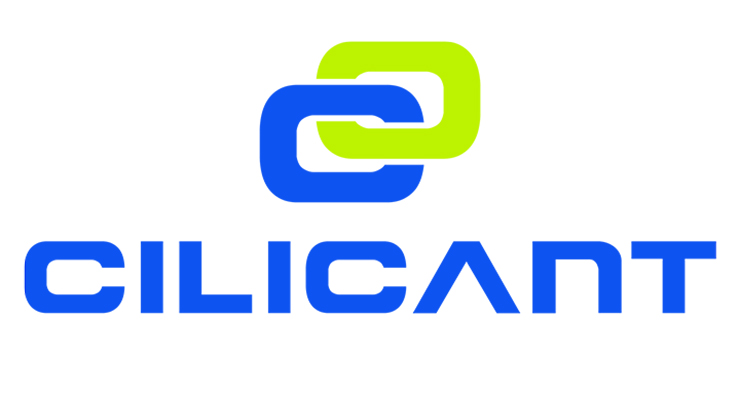Columns
A Business Perspective on Protecting Confidential Information: The NDA
Along with taking precautions in providing access to confidential information, a non-disclosure agreement can be a great way to protect your business.
By: Gregory Stephens

One party sends a non-disclosure agreement to another party who signs without really understanding all four pages of it. On another extreme, no agreement is signed, and parties just shake hands. Does it sound familiar? Let’s take a closer look at these two scenarios from a business perspective … and bring lawyers in later.
Why should we care about what may be perceived as subtle details of a document we sign if it helps to expedite the process and brings parties together to clinch a business deal? It is a common practice in our industry for a party seeking to initiate business discussion to send another party a Non-Disclosure Agreement (NDA) also known as a Confidential Disclosure Agreement (CDA). Once the NDA is signed, parties can freely discuss details of the potential business transaction.
In our industry, possibly more than others, companies derive substantial value from their confidential information by having exclusive use of it in their business and by sharing selectively with customers, suppliers, and others. It is imperative that companies maintain a high level of confidentiality with this valuable asset. One way to enable the exchange of information in facilitating business dealings and protect confidential information is through use of a legal document, an NDA.
NDAs are not only used between manufacturing partners, product developers, and consultants; many companies employ freelance or contract workers who may have access to confidential information.
Bottom Line: Having the NDA in place enables open discussions and provides protection for confidential information including trade secrets. Conversely, not having the NDA in place, like when parties just shake hands, may prevent the disclosing party from asserting trade secret status in court.
Digging Deeper
Consider an NDA as a guide that sets up the rules of a game. Depending on the rules set forth in the NDA, both parties commit not to disclose confidential information (e.g., business information, list of customers or suppliers, financial information, formulations, etc.) to any third party except in accordance with specific provisions. Often, the NDA specifies “what” is considered confidential. Understanding this provision is extremely important, especially for the receiving party, who will be responsible for safeguarding it, often for a number of years—and in the case of trade secrets, possibly forever. Thus, the receiving party would want some certainty and would ask to identify and label confidential information as such. Often, the language in the NDA is so broad and includes everything under the sun. For a consultant, this could be quite constraining.
Bottom Line: Consider limiting the subject matter and asking for a specific description.
Who Can You Share Confidential Information With?
The NDA usually specifies how the confidential information can be further shared. Also, as a recipient of confidential information, you might be constrained regarding who you can share it with. You may find yourself in a situation when you are a one-person company and the standard language of the NDA only allows the recipient to share with its employees, affiliates, or agents only. It is important to review such language and understand how it will align with your way of working. Many companies engage third parties such as freelance or contract workers who may need to have access to confidential information. Having the NDA with those third parties would not protect you if the original NDA did not allow for further disclosure to such third parties.
Types of NDAs
There are two primary types of NDAs: a unilateral (one-way) and mutual (two-way) NDA. Although both NDAs protect confidential information, they are not the same. In a unilateral NDA, only one party is disclosing confidential information and only one party undertakes to protect that information. On the other hand, in a bilateral NDA, both parties are disclosing confidential information and both parties undertake to protect the information received. If the receiving party needs to share the disclosing party’s information to a third party, it can be accomplished by entering into a three-party NDA. For example, Party B cannot disclose Party A’s confidential information to Party C unless they all sign the NDA.
Bottom Line: Consider your business practices before accepting the language of the NDA concerning further sharing of entrusted confidential information.
Timing is Crucial
Always be careful that you do not disclose confidential information prior to the receiving party executing the NDA. Otherwise, you make disclosures at your risk, as the receiving party could argue they did not agree to confidentiality of information disclosed prior to signing the NDA. A lesser known fact is that one may lose a right to a patent if disclosing the invention without first signing the NDA!
Expiration timing is crucial too. If, for instance, an NDA stipulates a 1-year term for disclosure of confidential information and 7 years for continuing safeguarding it after the expiration of the term, the disclosure of new confidential information after the 1-year term will not be protected.
Jurisdictions (e.g., states and countries) may treat NDAs very differently. Always clarify which law you wish to apply to the agreement. If you were working with another party that is halfway around the world, you may find it too difficult to enforce an NDA in a foreign court under foreign laws and foreign legal procedures. One way I have seen this addressed is to stipulate that the party initiating any legal proceedings follow the law of the location of the company being sued.
In summary, a good NDA will 1) define confidential information clearly and in detail, which allows you to protect things such as trade secrets and any other information that has to be shared with a third-party for a business arrangement; 2) aligns with your business practices and allows to further share confidential information as needed; and 3) provides with your certainty which law will govern.
A Common Mistake with NDAs
Confidential information is often defined too broadly. Although it may be tempting to define all information that you disclose to a Receiving Party as confidential, avoid using a catch-all clause.
I had one NDA submitted to my firm with confidential information being defined as anything we read, see or hear from the other company. Obviously, there is no chance I would sign such an agreement.
Ideally, limit confidentiality to information that is truly necessary to be kept a business secret. There are examples of courts invalidating an NDA where the definition of confidential was considered too broad. To help avoid this problem always ensure that information that is truly confidential be marked “CONFIDENTIAL.” Examples of confidential information include:
- Business and marketing plans
- Methods and operating procedures
- Technical, engineering, and scientific research and development
- Formulas and chemical compositions
- Trade secrets and unpublished patent applications
- Pricing, sales data, customer and supplier lists
- Terms of business contracts
Final Thoughts
From conversations with attorneys, I understand there are numerous things that can keep an NDA from holding up in court; most of them boil down to the way it’s written. NDAs need to be as specific as possible about what information should be confidential. Operating under the premise that anything learned during your business relationship is confidential seldom works. Limit confidential information to what may be harmful to your business if it got out.
One of the biggest issues with NDAs relates to third-party disclosure. You can have a client sign the agreement, for instance, but what about that client’s employees, consultants, and contractors? To be safe, you should specify that anyone who will have access to your company’s confidential information sign an NDA.
From my experience, behavior during negotiating the NDA can be an early indicator of what the entire project process will be like. For this reason, including unfair clauses in the NDA often creates a challenging environment for new partners, laying the groundwork for a challenging road ahead.
Rather than negotiating edits in your prospective partner’s NDA, develop your template specific to the business issues to be shared—one for freelance employees and consultants, another for manufacturing partners, one for clinical research centers, etc. Be sure to elicit real expertise when drafting these NDAs by seeking input from your attorney.
When combined with taking precautions in providing access to confidential information, an NDA can be a great way to get peace of mind and protect your business. If you are not 100% certain about something or have questions about NDAs, always contact an attorney.
These points reflect some of the problems I’ve found most prevalent when dealing with NDAs, but they are far from exhaustive. Avoid the excitement of working with a new partner and just signing their NDA after a cursory review. All of the provisions are extremely important and warrant a detailed review.
Gregory Stephens
Windrose Partners
Greg Stephens, RD, is president of Windrose Partners, a company serving clients in the the dietary supplement, functional food and natural product industries. Formerly vice president of strategic consulting with The Natural Marketing Institute (NMI) and Vice President of Sales and Marketing for Nurture, Inc (OatVantage), he has 25 years of specialized expertise in the nutritional and pharmaceutical industries. His prior experience includes a progressive series of senior management positions with Abbott Nutrition (Ross Products Division of Abbott Laboratories), including development of global nutrition strategies for disease-specific growth platforms and business development for Abbott’s medical foods portfolio. He can be reached at 267-432-2696; E-mail: gregstephens@windrosepartners.com.




















